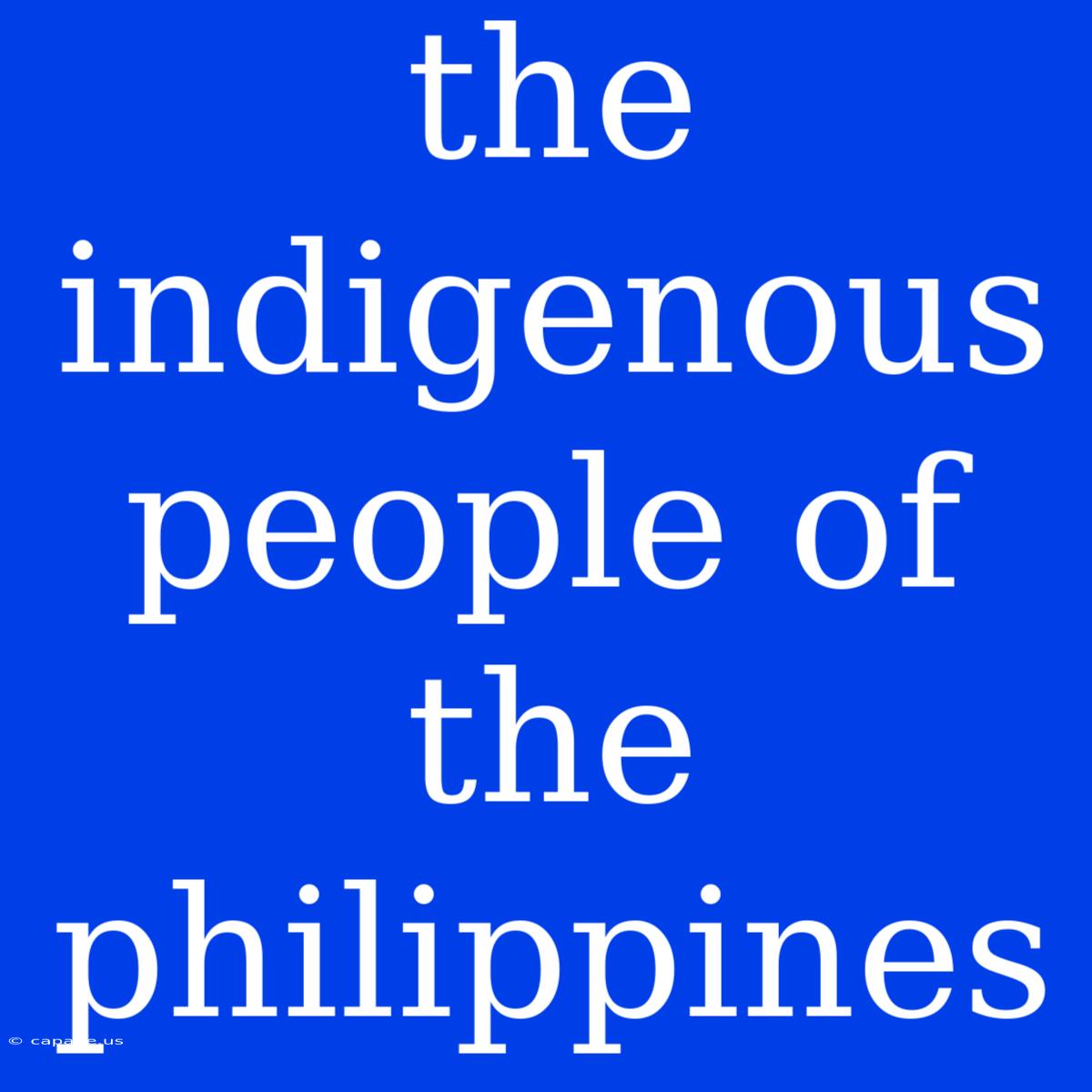Unveiling the Rich Tapestry: Exploring the Indigenous Peoples of the Philippines
Have you ever wondered about the diverse and vibrant cultures that have thrived in the Philippines for centuries? The archipelago's indigenous peoples, known as Lumad (meaning "native" in Cebuano), represent a fascinating tapestry of traditions, languages, and ways of life. Editor's Note: This article delves into the rich heritage of the indigenous peoples of the Philippines, highlighting their importance and contributions to the nation's cultural identity.
Understanding these communities is crucial because their stories, beliefs, and practices contribute significantly to the Philippines' cultural richness. This article explores the diversity of the Lumad, their unique traditions, and the challenges they face in the modern world.
Analysis: To present a comprehensive overview of the Lumad, we researched a range of sources, including historical records, anthropological studies, and current events. Our goal is to provide a clear and informative guide, highlighting the importance of cultural preservation and the struggles these communities encounter.
Key Aspects of the Lumad:
| Aspect | Description |
|---|---|
| Diverse Ethnolinguistic Groups | Over 100 distinct ethnic groups, each with its own language and cultural practices |
| Unique Traditions | Traditional arts, crafts, music, dance, and spiritual beliefs are vibrant and diverse |
| Land and Resource Dependency | Their livelihoods are deeply rooted in the natural environment, including farming, fishing, and forestry |
| Challenges | They face threats to their land rights, cultural integrity, and economic well-being |
Understanding the Lumad Ethnolinguistic Groups
The Philippines is a land of diverse indigenous groups, each possessing a unique cultural heritage. The Lumad are not a single homogenous group but a collection of ethnolinguistic communities. Some of the most prominent include:
- The Manobo: One of the largest indigenous groups in the Philippines, found in Mindanao and other parts of the archipelago. They have diverse sub-groups with distinct customs and beliefs.
- The T'boli: Known for their intricate woodcarving, traditional textiles, and unique "epics" that chronicle their history and beliefs. They inhabit parts of South Cotabato, Sultan Kudarat, and Sarangani.
- The Bagobo: A group found in the mountainous regions of Mindanao, known for their strong tribal organization, ancestral rituals, and intricate weaving traditions.
- The Igorot: Located in the Cordillera region of Northern Luzon, they are known for their rice terraces, intricate tattoos, and vibrant cultural festivals.
Celebrating the Rich Tapestry of Lumad Traditions
The Lumad celebrate their heritage through vibrant traditions that reflect their relationship with nature, their spiritual beliefs, and their social values. These traditions include:
- Rituals and Festivals: Many Lumad groups have elaborate ceremonies and festivals that celebrate important life events, such as harvests, births, and marriages. These events involve traditional dances, music, and attire, which are integral to their cultural identity.
- Arts and Crafts: The Lumad are renowned for their skilled craftsmanship. From intricately woven textiles to exquisite woodcarvings, their artistry reflects their connection to the natural world and their ability to transform materials into beautiful works of art. Examples include the T'boli's "T'nalak," a handwoven cloth decorated with intricate patterns, and the Ifugao's rice terraces, a UNESCO World Heritage Site.
- Oral Traditions and Storytelling: Stories, myths, and legends are passed down through generations, preserving the wisdom and history of their ancestors. These stories often reflect the close relationship between the Lumad and the natural world, teaching important lessons about life, respect, and responsibility.
The Challenges Faced by the Lumad
While their cultural heritage is vibrant, the Lumad face a number of challenges that threaten their survival and well-being:
- Land Grabbing and Displacement: The Lumad communities often experience displacement from their ancestral lands due to mining, logging, and other large-scale development projects. This deprives them of their livelihoods and threatens their cultural identity.
- Lack of Access to Education and Healthcare: Many Lumad communities have limited access to quality education and healthcare services. This restricts their opportunities for economic advancement and limits their ability to protect their health.
- Cultural Assimilation: The dominant Filipino culture can sometimes undermine the Lumad's traditions, language, and beliefs. This poses a threat to the preservation of their distinct cultural identity.
Conclusion: The indigenous peoples of the Philippines, the Lumad, are a vital part of the country's heritage. Their unique traditions, vibrant cultures, and resilient spirit contribute to the nation's rich tapestry. Understanding their struggles and celebrating their contributions is crucial to promoting respect for cultural diversity and working towards a more inclusive and equitable future.

